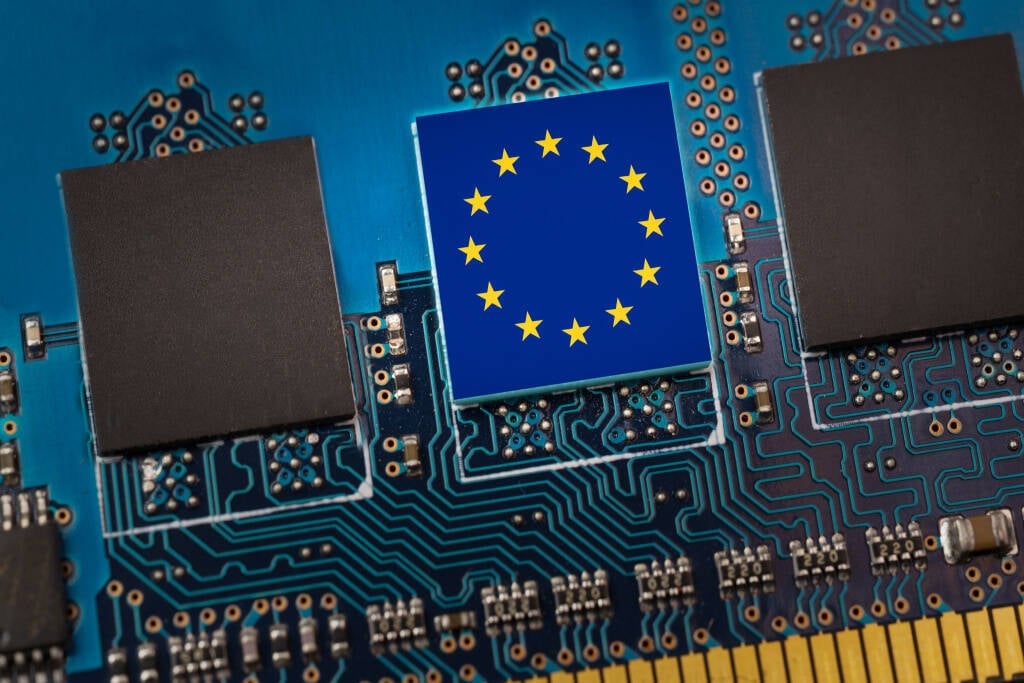Europe bets on RISC-V for homegrown supercomputing platform
-
This post did not contain any content.
I’m unexpectedly excited and hopeful for risc-v
-
Anyone else remember when Phil Schiller bored the Macworld expo to death explaining why RISC was better than CISC?
afaik, risc and cisc are pretty much the same anymore. x86, risc v and arm all have bloated instructions sets, and they all decode to risc microcode under the hood anyways.
-
This post did not contain any content.
There is no reference to it, but most semiconductors-making equipment is manufactured by a Dutch company named ASML. However, I don't know how useful this will be for EU to transition to RISC-V.
-
There is no reference to it, but most semiconductors-making equipment is manufactured by a Dutch company named ASML. However, I don't know how useful this will be for EU to transition to RISC-V.
It is a move to decouple from the USA for critical infrastructure.
They don't want to be in a similar situation as Ukraine in any potential conflict. Where the USA just says we will no longer allow you to use our computer chips for war with Russia. -
There is no reference to it, but most semiconductors-making equipment is manufactured by a Dutch company named ASML. However, I don't know how useful this will be for EU to transition to RISC-V.
it's complicated. afaik asml has agreements with the us govt, and cross licensing with american companies. also, asml only makes lithography tools, there's a LOT more to making semiconductors than just exposing patterns. and a few of the biggest vendors like kla and amat are american. kla in particular is essentially a monopoly in the metrology space.
-
ARM is a UK-based company. If they hadn't dropped out of EU, it's possible they would have settled on an ARM-based supercomputer design.
Chalk it up to another WIN for Brexit!
ARM was bought by the Japanese, it's no longer European. RISC-V is the future.
-
ARM was bought by the Japanese, it's no longer European. RISC-V is the future.
Not just by the Japanese but by Softbank and Son Masayoshi, the guy now doing buddy-buddy photo ops & "Stargate AI" with Trump.

-
Considering that you can buy some Raspberry Pi micro computers (these are ARM architecture computers) for less than €100 that are performance competitive with a lot of existing hardware; this idea would make a ton of sense for Europe to implement. I think Europe could probably start designing and manufacturing chips locally within 2 to 5 years on the low end 5 to 10 years on the high end.
ARM is proprietary tech owned by Softbank, whose boss Son Masayoshi was last seen cosying up to Trump with the "Stargate" AI consortium.
-
Regardless of the outcome I just hope this doesn’t lead to more tribalism in software again. The FOSS community needs to stay strong on an international level whenever it comes to hardware integration etc.
I'll contact the maintainers of all my favorite FOSS programs written in x86 assembler, to ask them to port the software to RISC-V.
-
Considering that you can buy some Raspberry Pi micro computers (these are ARM architecture computers) for less than €100 that are performance competitive with a lot of existing hardware; this idea would make a ton of sense for Europe to implement. I think Europe could probably start designing and manufacturing chips locally within 2 to 5 years on the low end 5 to 10 years on the high end.
I love the raspberry pi, but it's far from being competitive to something like an apple m4, a Qualcomm snapdragon or an am5 chip from AMD.
For its intended purpose it doesn't need to, but it's way slower and less power efficient.
-
This post did not contain any content.
Digital Autonomy with RISC-V in Europe
They really tried hard to make an acronym fit...
A bit like SHIELD
-
This post did not contain any content.
Give me something like Talos2 with a full OSS firmware and a performant CPU... and hell, a half-competitive open source graphics core too. It doesn't need to be peak performance, it needs to be good enough.
I've been trying to work with SBC's for a while for video decoding platforms and just wound up getting stuck on x86 because the ARM situation with weirdo custom kernels for anything useful is just... annoying.
-
Give me something like Talos2 with a full OSS firmware and a performant CPU... and hell, a half-competitive open source graphics core too. It doesn't need to be peak performance, it needs to be good enough.
I've been trying to work with SBC's for a while for video decoding platforms and just wound up getting stuck on x86 because the ARM situation with weirdo custom kernels for anything useful is just... annoying.
-
it's complicated. afaik asml has agreements with the us govt, and cross licensing with american companies. also, asml only makes lithography tools, there's a LOT more to making semiconductors than just exposing patterns. and a few of the biggest vendors like kla and amat are american. kla in particular is essentially a monopoly in the metrology space.
-
ARM was bought by the Japanese, it's no longer European. RISC-V is the future.

-
Considering that you can buy some Raspberry Pi micro computers (these are ARM architecture computers) for less than €100 that are performance competitive with a lot of existing hardware; this idea would make a ton of sense for Europe to implement. I think Europe could probably start designing and manufacturing chips locally within 2 to 5 years on the low end 5 to 10 years on the high end.
ARM and RISC are not equal. The fastest current RISC CPU is an absolute potato. Then you've got ARM-based chips way faster than a Pi. Then there's silicone like the M4. It's a big uphill for RISC, which is why this, and the investments from the Chinese, are good but longer-term plays.
-
ARM and RISC are not equal. The fastest current RISC CPU is an absolute potato. Then you've got ARM-based chips way faster than a Pi. Then there's silicone like the M4. It's a big uphill for RISC, which is why this, and the investments from the Chinese, are good but longer-term plays.
The question should be then what ARM CPU compares to current RISC-V best CPU and see the gap in years.
-
so, I don't know if the shit hole made anything WORTH copying, but why respect american intellectual property? you know americans don't respect yours. copy NVIDIA's CUDA shit, if that's efficient. fuck em.
The efficiency is not on the API it is on the microarchitecture. The value of copying the API is just to run unmodified software made for CUDA.
-
The efficiency is not on the API it is on the microarchitecture. The value of copying the API is just to run unmodified software made for CUDA.
There's also a lot of efficiency in hardware-specific kernels. A generic rocm build vs. one with hand-written kernels (not even for the proper card just a close enough one to have the same instructions) is like a 10x performance drop. That's on the matrix multiply up to convolve these tensors level, on the layer above that you then have things like smart memory management and scheduling as well as minimising how much work needs to be done in the first place (re-ordering operations so tensors stay small) and stuff.
You can port cuda code to vulkan or opencl -- but you're going to have to reimplement all of that. Just getting the BLAS layer to not suck is a challenge.
-
ARM and RISC are not equal. The fastest current RISC CPU is an absolute potato. Then you've got ARM-based chips way faster than a Pi. Then there's silicone like the M4. It's a big uphill for RISC, which is why this, and the investments from the Chinese, are good but longer-term plays.
Not a matter of instruction set, though. Current RISC-V designs are built from scratch by companies pretty much doing their first chip and/or design studios out of the microcontroller space, if say AMD would spend a year slapping a RISC-V insn decoder onto their existing designs that shit would fly.
I guess of the big performance vendors Quallcomm will be first, they have a bone to pick regarding ARM licensing.



